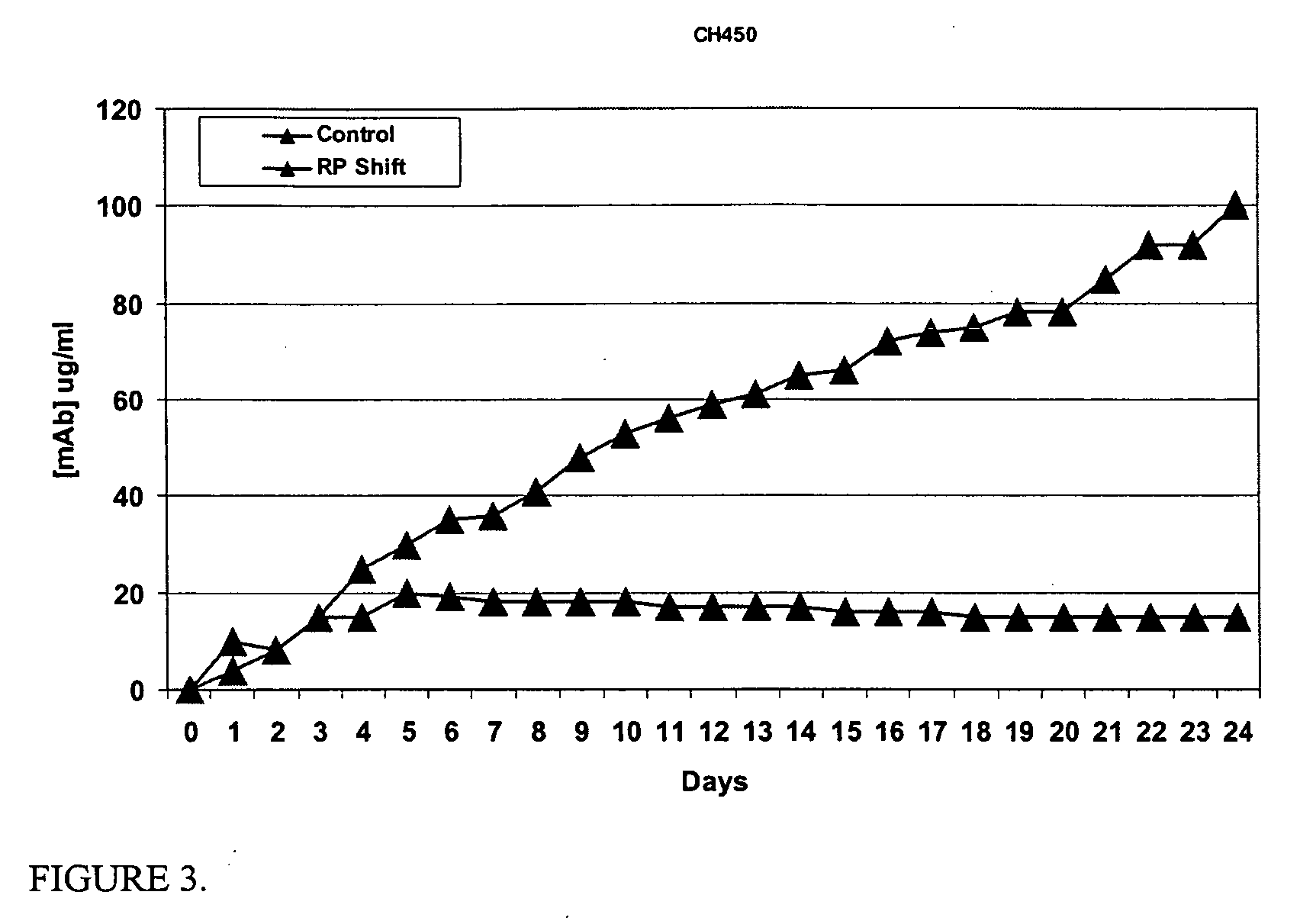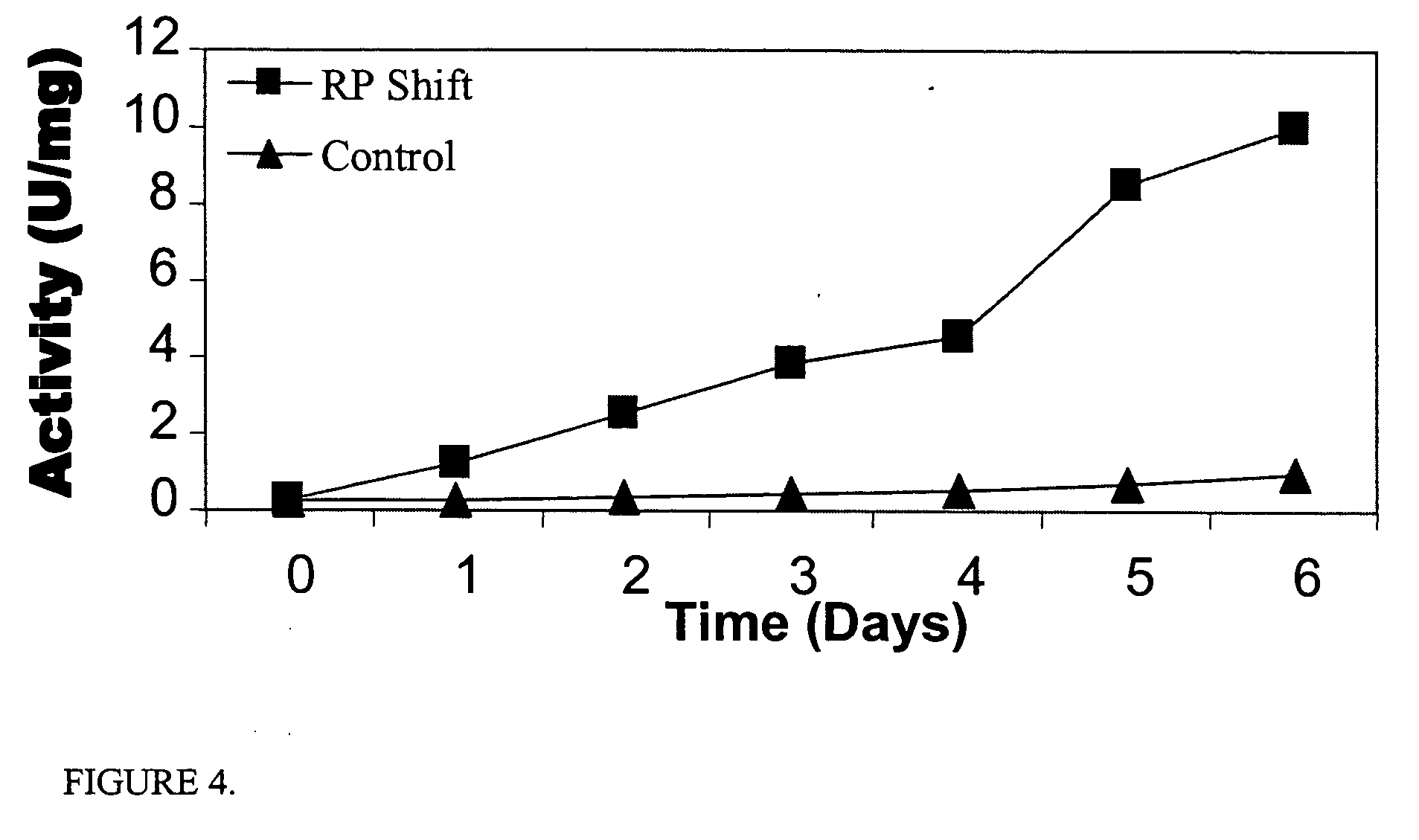Cell lines for use in increasing protein yield from a cell culture
a cell culture and cell technology, applied in the field of cell lines, can solve the problems of high degree of unpredictability in achieving useful production levels of heterologous proteins, and methods that have not been applied with equal success, and achieve the effect of increasing heterologous protein production
- Summary
- Abstract
- Description
- Claims
- Application Information
AI Technical Summary
Benefits of technology
Problems solved by technology
Method used
Image
Examples
example 1
Premature Senescence Enhances Protein Secretion in Hybridoma Cell Lines
[0082] Experiments were designed to determine the robustness of premature senescence methods in low, medium and high mAb producing cell lines. An important concern for mAb development is to produce enough mAb to complete preclinical and early clinical studies. Often, hybridomas secreting high affinity mAbs produce low titers of mAbs. These hybridoma cell lines are typically excluded from further product development because of a lack of mAb necessary to complete the studies. Premature senescence can enhance the production capacity of these low mAb producers, so that these more effective antibodies may continue in therapeutic development. Therefore, the hybridoma target cells used in these feasibility investigations were L5G3 producing IgG toward L1CAM, MH70 producing IgG toward rhodopsin, and CH450 producing IgG toward CD24. These hybridoma cell lines were chosen for their different levels of mAb production, LG53...
example 2
Premature Senescence Enhances Protein Secretion in CHO Cell Lines
[0087] The effects of inducing premature senescence in CHO cell lines was investigated, since they are widely used in commercial production of single chain antibodies and immunoglobulin fragments. CHO cells were also chosen because they have been demonstrated to undergo senescence. A secretable alkaline phosphatase recombinant expression construct (SEAP, Clontech) was stably introduced into CHO cells to monitor enhanced protein expression. An IRES-containing retroviral construct was used for delivery of the native TetR that was engineered to include a nuclear localization signal. The Pantropic system (Clontech) was used to deliver the retroviral DNA into the cells as described in Example 1. Cells containing TetR were selected as described in Example 1. Senescence-triggering fragments from Cip / Kip and INK4A proteins were introduced into CHO cells as described in Example 1. Senescence-competent CHO cells were selected i...
PUM
 Login to View More
Login to View More Abstract
Description
Claims
Application Information
 Login to View More
Login to View More - R&D
- Intellectual Property
- Life Sciences
- Materials
- Tech Scout
- Unparalleled Data Quality
- Higher Quality Content
- 60% Fewer Hallucinations
Browse by: Latest US Patents, China's latest patents, Technical Efficacy Thesaurus, Application Domain, Technology Topic, Popular Technical Reports.
© 2025 PatSnap. All rights reserved.Legal|Privacy policy|Modern Slavery Act Transparency Statement|Sitemap|About US| Contact US: help@patsnap.com



